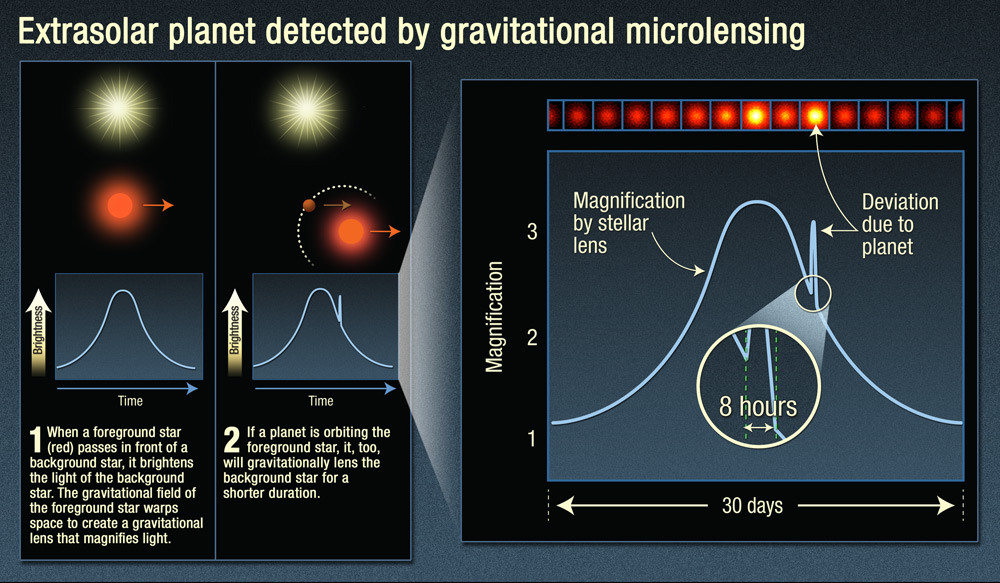Gravitational Microlensing
The microlensing method looks for the effects of gravity on the light from a star. It is a good way of finding objects that are very faint.
Gravity is the result of mass warping and curving the fabric of time and space. You can think of it like a bowling ball on a trampoline. The ball will distort the material.
Light travels in a straight line. Gravitational lensing takes place when light follows the curve of the fabric of time and space. The light is bent and focused. The result is like looking through a huge magnifying glass. Really massive objects like black holes, produce the biggest effect. However, less massive objects like stars and planets can also cause a small effect, called microlensing.
We see microlensing events when the gravity of an exoplanet and its star acts like a lens. As the planet and its star pass between Earth and a more distant star, light from the more distant star is bent and magnified.
If the nearer star has an exoplanet, then the planet's gravity will add to the lensing effect. It will create a specific 'blip' in the light from the distant star.
This method requires the 2 stars to be almost exactly aligned as seen from Earth. For individual stars, the chances of this are very low. These alignments are once-in-a-lifetime events and only last for days or sometimes weeks. So to find an exoplanet, we must monitor a huge number of stars. The chances of success increase if we look for planets between Earth and the centre of the Milky Way. This is because there are more background stars towards the centre of the galaxy.
According to NASA's Exoplanet Census, about 3% of known exoplanets were found using microlensing.

Credit: Exoplanet Exploration, NASA

